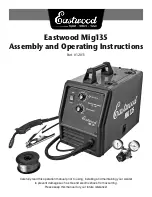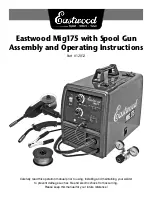
Battery backup enable/disable (link PLK2)
Link PLK2 (supplied) enables or disables the call controller’s battery backup
facility. When enabled (link PLK2 fitted), the battery backup supply will
continue to power the system for approximately 24 hours (standby) plus 15
minutes (alarm running time) in the event of a mains failure. This will be
indicated by the call controller’s power ‘On’ LED flashing green.
Should the mains supply remain disconnected for a prolonged period of time, the battery
backup facility will automatically shutdown to prevent the batteries from deep discharge.
Note: PLK2 is not fitted in the call controller when dispatched. This is to conserve battery life
and ensure the safety of the call controller during storage/transit.
Volume control (potentiometer VR1)
Turn VR1 clockwise to increase (or anti-clockwise to decrease) the volume of
the call controller’s on-board sounder.
Sounder and LED test facility
With no calls on the system, pressing the call controller’s ‘Call Accept’ button with link PLK1
fitted in the Reset (b) position will cause all of the system’s sounders and LEDs (apart from
the ceiling / wall pull’s LED) to activate. When the button is released, the LEDs and sounders
will switch off. The same test can be carried out by pressing the reset point’s ‘RESET’ button.
EXPANDING THE SYSTEM WITH OPTIONAL EMERGENCY CALL LEVEL
Up to three additional 800 Series devices (any device mix) can be connected to the NC943B
call controller. A typical expanded system is shown in figure 4 below. Should you wish
to connect more than three additional devices, consider using an NC941 single zone call
controller which is designed for powering larger call systems.
If required, the call controller can be used to generate a more urgent level of call. One
compatible device is the NC804DE emergency call point (shown below). This device is
typically used to allow the person attending the call to request additional assistance. When
an emergency call is triggered, any active or accepted alarm calls will be overridden. The call
controller’s red ‘Calling’ LED will flash, its sounder (and relay) will pulse and the overdoor
light will also pulse.
Figure 4 : Typical Expanded NC951 System with Emergency Call
Approved Document No.: DNU0951001 Rev 5 • Page 6 of 8
Reset
Reset
Reset
(no link fitted)
Volume
NO
C
NC
CONN3
Fit to
Enable
battery
PLK2
Accept
Accept
Accept
VR1
PLK1
PLK1
PLK1
SIG
1 -Ve +Ve
NC C NO
NEGATIVE
SIGNAL
POSITIVE
Volt free relay
contacts
Sig -Ve +Ve
Sig
Sig
S
-V
+V
1
-Ve +Ve
-Ve
+Ve
-Ve
-Ve
Intermittently when help is on the way
R
RE
ES
SE
ET
T
Indicators will operate:
Continuously when pull cord is activated
Intermittently when help is on the way
On
Calling
Call Accept
F
U
S
E
Call
ALERT
RESET
NC943B
NC806CS
NC807C
NC809DBBT
NC807C
NC804DE
NC806CS
/
1mm
2
T&E
DESIGNING AN ACCESSIBLE TOILET ALARM SYSTEM
Figure 2 below, shows a typical ‘good practice’ corner WC layout for an accessible toilet alarm
system based on the recommendations of BS 8300 and the Building Regulations Approved
Document Part M. Always refer to the full version of these documents before system design
and installation. Refer to figure 1 (page 2) for wiring details.
Figure 2 : Typical Accessible Toilet Alarm System for a Corner WC
WC
Indicators will operate:
Approved Document No.: DNU0951001 Rev 5 • Page 3 of 8
Site the ceiling / wall pull so its pull
cord is behind the horizontal grab
rail and reachable from the WC and
from the floor close to the WC.
Site the call controller
outside the WC in a
remote staffed area.
Site the reset point so it is reachable
from the WC and a wheelchair.
Position with its bottom edge at
800mm to 1000mm above floor level.
Set the lower
triangle at 100mm
above floor level.
Set the upper
triangle at 800mm
to 1000mm above
floor level.
4 core
security cable
230Va.c.
3A switched
fused spur.
Site the overdoor
light outside the
WC above the door.
1mm
2
T&E
Reset
Reset
Reset
(no link fitted)
Volume
NO
C
NC
CONN3
Fit to
Enable
battery
PLK2
Accept
Accept
Accept
VR1
PLK1
PLK1
PLK1






















